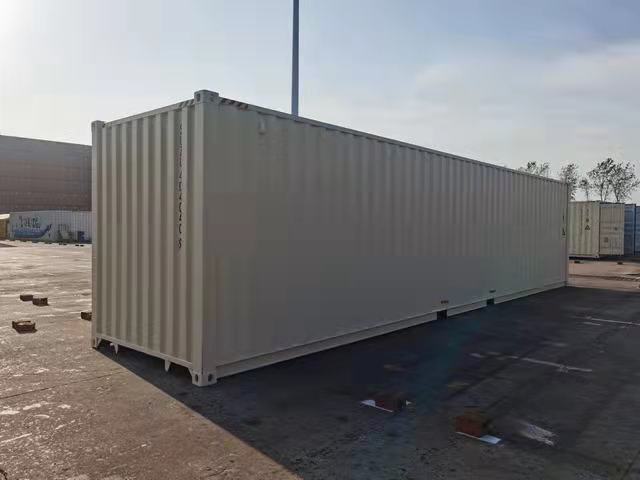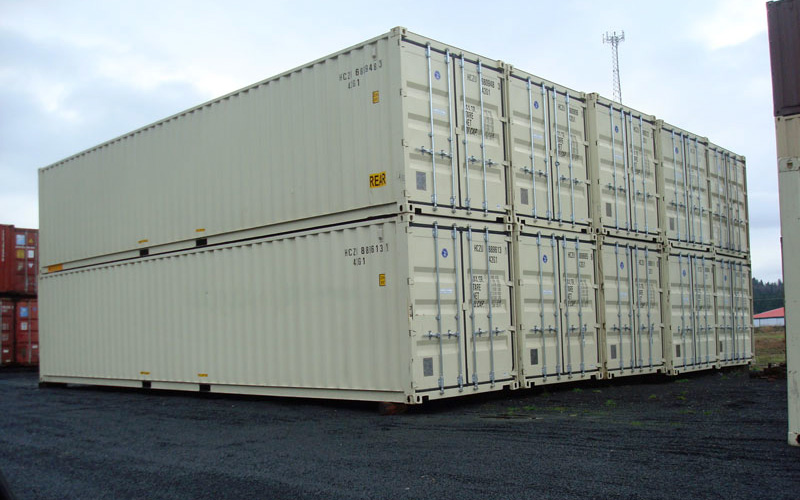The Ultimate Guide to Choosing the Right Delivery Container for Your Needs
When it involves selecting the ideal shipping container, comprehending your specific requirements is crucial. You'll want to consider elements like dimension, kind, and product to ensure you make the very best choice. From typical sizes to specialized options, there's a great deal to check out. Plus, budgeting for both the container and any kind of modifications can make a big distinction. Let's break down the vital aspects to aid you locate the best suitable for your requirements.
Recognizing Shipping Container Sizes
When you're choosing a delivery container, recognizing the various dimensions offered is essential for making the appropriate decision. Shipping containers usually can be found in common sizes of 20 and 40 feet, but you'll likewise discover other measurements. Knowing the size you require relies on what you plan to store or transport.If you're moving smaller items, a 20-foot container may be suitable, while bigger deliveries usually require a 40-foot container. Keep in mind that the elevation can likewise differ; high dice containers provide additional vertical room, which can be advantageous for taller goods - New Shipping Container 40' x 8' x 9’6".Before making a decision, determine your freight, and take into consideration just how much area you'll require for filling and discharging. Constantly aspect in prospective future needs-- choosing a somewhat larger container might conserve you problem down the line. Inevitably, selecting the right dimension will certainly boost efficiency and assure your products are secure throughout transportation
Kinds of Shipping Containers Available
There are numerous types of delivery containers readily available, each developed for specific functions and freight needs. The standard dry container is functional, best for general freight. If you're delivering disposable goods, think about a refrigerated container, which maintains a controlled temperature level. For oversized products, high dice containers offer added elevation, accommodating taller loads.If you need to move heavy equipment or equipment, level shelf containers offer a durable base without walls. Open-top containers permit for easy loading of tall freight, with a removable tarp covering for defense. If you're searching for versatility, consider a retractable container that can be quickly stored when not in use.Lastly, specialized containers like tank containers are utilized for fluids, while vented containers are designed for bulk freight that requires ventilation. Understanding your freight type will assist you select the appropriate container to meet your shipping needs efficiently.
Material Considerations for Toughness
When selecting a delivery container, the product plays a crucial function in its toughness. You'll intend to weigh the benefits of steel versus aluminum, particularly relating to corrosion resistance. Comprehending these factors can help you make a much more educated choice for your shipping requires.
Steel vs. Light weight aluminum Containers
Exactly how do you choose between steel and aluminum containers for your shipping needs? Start by taking into consideration durability. Steel containers are durable and offer excellent strength, making them excellent for heavy lots and rough problems. They withstand damage from effects and are commonly less expensive, which can be a significant aspect for budget-conscious buyers.On the other hand, light weight aluminum containers are light-weight, which can conserve you on shipping prices. They're much easier to steer and are a fantastic option if you need to transfer items regularly. Aluminum is generally a lot more expensive and much less durable than steel. Consider your details requirements thoroughly, consisting of weight, expense, and the type of freight you'll be shipping, to make the ideal choice for your scenario.
Deterioration Resistance Aspects
Selecting the appropriate material does not just involve weight and price; rust resistance plays a substantial function in longevity. When picking a shipping container, consider the atmosphere it'll face. Steel containers, while strong, can rust if not Recommended Reading effectively dealt with. Look for choices with safety finishings or galvanization to enhance their lifespan. Aluminum, on the various other hand, offers all-natural rust resistance, making it optimal for coastal locations or moist conditions. Nonetheless, it can be a lot more pricey. In addition, assess the container's usage-- if it'll be subjected to chemicals or harsh climate, focus on materials that can withstand these problems. Purchasing a corrosion-resistant container currently can save you from costly fixings or substitutes down the line. Select carefully for lasting advantages.
Adjustments and Modification Options
Delivering containers aren't simply for carrying goods; they can be transformed to fulfill your certain needs through numerous alterations and personalization options. You can convert a typical container right into a cozy office, a short-term retail store, or also a personal gym. The opportunities are virtually endless.Think regarding adding windows, insulation, or air flow to boost comfort. You could additionally think about electrical circuitry, pipes, or perhaps personalized shelving to boost capability. If protection's a concern, strengthened locks can give peace of mind.For aesthetic allure, you can repaint the container or include an unique layout to make it stick out. Do not forget floor covering choices-- whether you want resilient plywood or something extra advanced, it can raise the space.Ultimately, tailoring your shipping container to match your needs can boost functionality and develop an unique environment that shows your style.
Analyzing Your Transport Requirements
When it comes to utilizing your customized delivery container, recognizing your transport needs is crucial. Beginning by establishing what you'll be delivery-- whether it's hefty equipment, retail items, or individual things. Each kind of freight has different demands relating to size, weight, and accessibility.Next, think about the range and mode of transportation. Are you shipping in your area, across the country, or worldwide? This affects the container's layout and functionality. If you're using trucks, assure your container fits standard measurements for easy loading and unloading.Additionally, consider transportation problems. Will your things need unique defense from climate or temperature level fluctuations? If so, you may need insulation or ventilation functions in your container.Lastly, examine exactly how typically you'll be transferring products. Regular deliveries may need a more sturdy and flexible container to satisfy recurring needs. By resolving these factors, you'll be well-prepared to choose the right shipping container for your needs.
Budgeting for Your Shipping Container
Setting a spending plan for your shipping container is necessary for making sure a smooth investing in process. Determine exactly how much you can afford to spend. Maintain in mind that costs can vary significantly based on dimension, problem, and kind. New containers typically set you back extra, however used ones can use significant savings.Next, take into consideration any kind of extra prices you could sustain, such as transport costs, delivery charges, and modifications. If you plan to customize the container, consider those expenses as well. Study different suppliers to compare costs and discover the finest bargain that satisfies your needs.Don' t neglect to consist of any type of licenses or regulations that might relate to your acquisition and use the container. By plainly outlining your budget, you'll be better prepared to make informed decisions, ensuring visit our website you obtain the appropriate container without breaking the bank.
Maintenance and Treatment for Durability
To guarantee your delivery container lasts for many years, routine upkeep is crucial. Start by inspecting the outside for rust, dents, and damage. If you detect any kind of concerns, resolve them immediately to avoid additional deterioration. Tidy the container occasionally, both throughout, to get rid of dirt, particles, and click to read more dampness that can result in corrosion.Ensure the doors secure appropriately and lubricate the hinges to avoid corrosion and sticking. If you're using the container for storage, consider including ventilation to lower humidity and mold and mildew development. For added defense, use a rust-inhibiting paint or sealant annually.If your container's situated in a rough setting, like seaside locations, you may need to raise maintenance frequency. Keep an eye on the flooring, too; any kind of indications of wear must be fixed as soon as possible. With these basic steps, you'll expand the life of your delivery container substantially.
Often Asked Concerns
How Do I Locate a Trusted Shipping Container Distributor?
To locate a trustworthy delivery container distributor, begin by looking into on the internet reviews, requesting recommendations from buddies or market contacts, and contrasting costs. Always check their qualifications and assurance they provide high quality containers that meet your demands.

Can I Lease a Shipping Container As Opposed To Buying?
Yes, you can certainly rent out a delivery container as opposed to purchasing one. Lots of providers offer rental options, which can conserve you cash and offer flexibility if you only require it for a short period.
What Allows Are Needed for Container Placement?

Are Shipping Containers Weatherproof and Suitable for Outdoor Storage Space?
Yes, delivering containers are usually weatherproof, made to stand up to rough problems. Their durable building and construction maintains your things safe and secure and completely dry, making them appropriate for outside storage. Just guarantee proper air flow to avoid dampness build-up inside.
Just how Do I Deliver a Delivery Container When Purchased?
